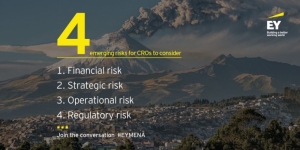عرض العناصر حسب علامة : التدفق النقدي
رسالة ماجستير: مدى تأثير السيولة والفرص الاستثمارية علي الهيكل المالي
هدفت الدراسة إلى التعرف على مدى تأثير السيولة والفرص الاستثمارية على الهيكل المالي في الشركات الصناعية المدرجة في بورصة فلسطين
إدارة العمليات: كيف تطلق العنان لسير العمل في عملك
يعد فهم العمليات التي تقوم عليها عملياتك وكيفية إدارتها سرًا اساسياَ للنجاح بالإضافة إلى أنه أصبح أسهل من أي وقت مضى.
معلومات إضافية
-
المحتوى بالإنجليزية
Process management: How to unleash your business workflows
Understanding the processes that underpin your operations and how to manage them is a poorly kept secret to success – plus, it’s getting easier than ever to achieve.
From sole traders to multinational corporations, the importance of process management as an underlying foundation for good business management (and, in turn, steady and sustainable growth) can’t be understated.
Not to be confused with program management or process management in computing, Wikipedia defines process management for businesses as ‘the discipline in which people use various methods to discover, model, analyse, measure, improve, optimise and automate business processes’.
So, to truly understand process management, the business manager not only needs to understand which processes are being used, but how they’re being achieved.
That means gaining insight into the people involved, be they employees, contractors, suppliers or even customers, as well as understanding the technologies they use to facilitate your business processes.
Terms like ‘workflow’ and ‘business process’ are often used interchangeably, especially when discussing the software used to support them.
For example, you might find a sales team describe the work they do as a process that is documented by the customer relationship management (CRM) system, while at the same time the work that the marketing team does is described in terms of their workflows (perhaps working with both a CRM system and a content management system).
Key processes and workflows
As businesses grow, their operations become more complex as more processes are added and employees join the organisation.
And as they specialise, whether it’s because of industry sector or business model, those processes become more unique to the business’s niche.
Still, the majority of all core workflows and processes fall into common categories, as detailed below.
Revenue generation
This includes your sales and customer service, marketing and advertising activities – essentially everything involved with the transactional side of your business.
Supplier management
These processes cover supply management and tracking, as well as all your orders, inventory and creditor payment processes.
People management
Think scheduling and rosters, time tracking and payroll – it’s all covered by people management.
Contractors, part-time staff, and management (right up to the executive suite) will all need to be considered when it comes to onboarding and training exercises, too.
Cash flow management
Bringing it all together, cash flow management uses business intelligence and analytics in tandem with accounting and bookkeeping activities to create a view of your overall business health.
Compliance
As a guiding layer, compliance activities exist for every facet of business operations.
Compliance requires a business to keep adequate documentation, to process tax obligations and maintain key certificates, licenses and contracts.
Slight differences in how work is defined and described can cause miscommunication in a complex business and could even cause structural and data ‘siloes’.
Until recently, growing businesses have had to cobble together any number of different solutions in order to deliver to their offering, often leading to growing pains when operations outgrew their current licenses and infrastructure.
Today, these challenges can be easily avoided.
That’s because modern business management technology can work to integrate many separate processes within a common platform, improving business connectivity and lowering the burden of business complexity in general.
Doing so enables a business to discover and deliver on sources of additional productivity based on faster, more accurate business intelligence.
Whether it’s reducing the number of errors creeping into sales data or making simple changes to lift employee engagement, integrating your core business processes in the one place makes it all possible.
In other words, a unified business management platform is the first step towards unleashing your workflows and unlocking future success.
رسالة ماجستير: التحليل المالي في ظل النظام المحاسبي المالي
بعد أن ظل التحليل المالي لفترة طويلة حكراً على المتخصصين في ميدان مالية المؤسسات، ولا يمارس إلا من وجهة نظر مالكي رأس المال، امتد وبصفة تدريجية حتى لمس اهتمام شرائح واسعة من المستعملين.
رسالة دكتوراه: تكاليف الوكالة للتدفقات النقدية الحرة وعلاقتها بأنماط هيكل الملكية والتكلفة المرجحة لهيكل رأس المال لتعزيز ثروة المساهمين
يهدف هذا البحث إلى دراسة العلاقة بين تکاليف الوکالة بأنماط هيکل الملکية المرکزة (العائلية ، الحکومية) فى البيئة المصرية وعلاقتها بالتدفقات النقدية الحرة والمتوسط المرجح لتکلفة رأس المال المستثمر، وذلک لتقييم الأداء من خلال تعزيز ثروة المساهمين فى قطاع خدمات ومنتجات صناعية وسيارات.
التخطيط الاستراتيجي الصحيح للنمو
تستخدم الشركات خطط النمو الإستراتيجية لتوجيه الزيادة في حصتها في السوق بشكل مستدام نقدم إليك كيفية إنشاء وتحسين خطتك الاستراتيجية الصحيحة.
رسالة دكتوراه: الدور المعدل لإدارة الأرباح بالأنشطة الحقيقية على العلاقة بين استمرارية الأرباح ومحدداتها
الهدف: اختبار أثر الأرباح الحالية، وعنصريها (التدفقات النقدية التشغيلية والاستحقاقات)، على الأرباح المستقبلية، لاختبار مدى استمرارية الأرباح، بالإضافة إلى اختبار الدور المُعَدِّلْ لإدارة الأرباح بالأنشطة الحقيقية على هذه العلاقات، وذلک بالتطبيق على الشرکات المقيدة بالبورصة المصرية.
معلومات إضافية
- البلد مصر
دور الفكر المحاسبي في إدارة التبعات الاقتصادية المترتبة على جائحة كورونا مع دراسة استطلاعية
واجهت مصر العديد من التبعات الاقتصادية على إثر التعرض لأزمة فيروس کورونا المستجد بشکل مفاجئ, انعکس بعضها بشکل مباشر على المرکز المالي للمنشآت وکان للبعض الآخر انعکاس على الاقتصاد ککل عن طريق التأثير على قطاعات هامة وحيوية مثل السياحة والتشييد والبناء وغيرها من القطاعات وبالتالي على معدلات دخول الأفراد.
معلومات إضافية
- البلد مصر
رسالة ماجستير: تأثير العلاقة بين الملكية الإدارية والرافعة المالية على مستوى الإحتفاظ بالنقدية
معلومات إضافية
- البلد مصر
رسائل ماجستير: أثر تقلب الأرباح والتدفقات النقدية على هيكل رأس المال: دراسة تطبيقية على الشركات المساهمة المقيدة بالبورصة المصرية
يهدف البحث إلى دراسة واختبار أثر کلا من الأرباح والتدفقات النقدية ومعدل تقلبهما على هيکل رأس المال الشرکات غير المالية المساهمة المقيدة ببورصة الأوراق المالية المصرية.
معلومات إضافية
- البلد مصر
كيف تستعد للمخاطر التي لا يمكنك التنبؤ بها؟
معلومات إضافية
-
المحتوى بالإنجليزية
The age of transformation and disruption was already bringing on new risks for businesses and demanding a different way of thinking. Add a global pandemic to the mix and risk management becomes a critical component to how organizations will manage the future of their business.
Organizations in both the public and private sector in the MENA region are currently facing challenges that are opening them up to risks they may not have accounted for. These include changes to the way of working, such as the need to manage the balance of people on the ground and the increased use of tech to allow remote access.
While government entities and private organizations have mostly mitigated the immediate challenges of the pandemic, there are four emerging risks that Chief Risk Officers (CROs) need to take into consideration when advising stakeholders:
1) Financial risk: The ability to continue to secure financial sustainability for any organization, whether through driving efficiency or managing cashflow
2) Strategic risk: The ability to develop a dynamic strategy that would cater to the changing environment and new way of doing business
3) Operational risk: The ability to drive an efficient and profitable operating model with a good balance between people, the use of technology, and processes
4) Regulatory risk: Whether an organization’s current regulatory framework caters to new circumstances
In order to regain stakeholder and consumer trust, CROs should facilitate discussions with other leaders about the future of the business and securing a resilient operating model.
When reviewing the organization’s risk profile and how to best mitigate new risks, CROs need to prioritize:
· The need to challenge the current strategy and rethink risk protocol in light of the change to how people are interacting with organizations and conducting their lives
· How to cater to the quickly changing needs of their audience and the new norm of doing business
· Being conscious of dynamic changes and what a new future will bring – whether that involves new technology, financial, or operating models – and addressing those challenges as well
· Addressing the talent pool and the skills and tools they will need to work in this new business environment
· Creating a new way of reporting that includes real-time insights to keep stakeholders and board members updated on the full scope and scale of risks as well as how they are impacting different business units
In the past year, many organizations in the MENA region re-examined their protocols for both internal management and audience engagement as they navigated the implications of the pandemic. It has spurred a movement among C-suite and board members to encourage innovation and the use of technology at scale to support the changing needs of employees and consumers. The willingness of an organization to invest in automation in parallel to their risk and compliance function will help build improved resilience into the evolving risk environment. And that investment in risk is how to create trust among stakeholders.
The views reflected in this article are the views of the author and do not necessarily reflect the views of the global EY organization or its member firms.










